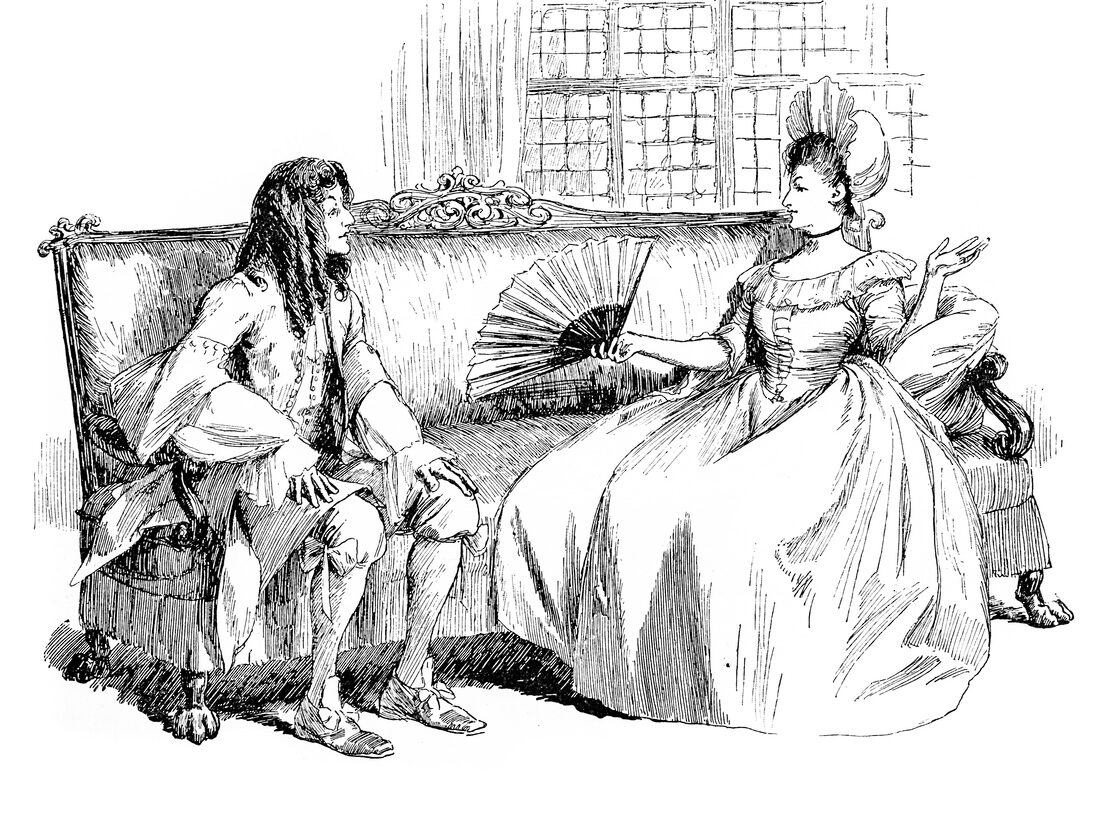 Getty Images/iStockphoto
Getty Images/iStockphotoModern dating can feel complicated, but if you ever find yourself overwhelmed by awkward texts, ghosting, or decoding someone’s mixed signals, just be glad you weren’t dating in the Victorian era. Love in the 19th century came with its own strict rules, endless etiquette, and a whole lot of surveillance. Romance wasn’t just a private matter; it was a highly controlled social ritual, often involving family approval, coded communication, and layers of protocol. Every step had meaning, and every decision could have social consequences. Here are some of the most bizarre and restrictive Victorian dating customs that make modern dating look simple by comparison.
1. Courtship was a formal process, not casual dating.
Victorian dating wasn’t really dating at all. In fact, it was called courtship, and it was always aimed at marriage. There was no such thing as seeing someone casually or “just talking.” Romantic interaction could only begin after serious intentions were declared. A man couldn’t simply strike up a conversation with a woman he admired—he had to be formally introduced, usually through a family connection. The entire process was monitored closely, and any deviation from the expected order could lead to scandal or social ostracism. Even letters of introduction had to be properly worded and reviewed.
2. Chaperones were everywhere.
Unmarried women were almost never left alone with a man who wasn’t a close family member. All meetings were supervised, typically by a mother, aunt, or trusted family friend. Even seemingly innocent activities, like sitting in a garden or taking a walk, required the presence of a chaperone. These rules were strictly enforced to protect a woman’s honour, which was deeply tied to her family’s social standing. If a woman was seen alone with a man, gossip could spread quickly and damage her reputation beyond repair. The presence of a chaperone wasn’t optional. It was a crucial part of the courtship process.
3. Flirting was done with fans and gloves.
Because direct conversation about feelings or desires was considered inappropriate, Victorian women developed a whole language of subtlety. Fans, gloves, parasols, and handkerchiefs became tools for coded communication. A dropped glove might signal interest, while fanning slowly could mean a woman was watching someone with curiosity. There were entire guides published to help decode these gestures, turning flirtation into a discreet, performative act. These signals allowed couples to communicate without ever having to say anything outright, giving them a small sense of agency within a rigid system.
4. Love letters were written with precision.
In the absence of texts, phone calls, or private conversations, letters became the primary means of romantic communication. However, they weren’t casual—they were carefully composed, written in elegant script, and filled with poetic language. Often, these letters were reviewed by a parent or guardian before being sent. Writing a love letter was almost a literary exercise, and a poorly written one could seriously damage a suitor’s chances. Letters were kept, re-read, and even shown to friends and family members. They were more than messages. They were testaments to character, intention, and emotional intelligence.
5. Physical contact was minimal to non-existent.
Any form of physical intimacy was tightly restricted before engagement. Even something as mild as holding hands was considered forward unless it occurred during a dance or other structured social event. A brief touch during a waltz or a gloved handshake might be the only contact allowed for weeks or months. Kissing, embracing, or anything suggestive was absolutely off-limits. In some households, even engaged couples were discouraged from being alone together, lest temptation strike. Affection was something to be earned, after the vows were exchanged.
6. Suitors had to pass the parental test.
A man might fall in love, but if a woman’s parents, especially her father, disapproved, the relationship would usually go nowhere. Suitors were expected to prove they were financially stable, morally upright, and from a respectable family. Some fathers required character references, financial statements, or even conversations with local clergy. Social compatibility mattered just as much as personal chemistry. If a suitor failed this unspoken test, the courtship was over, no matter how smitten the couple might have been.
7. Gifts were highly symbolic.
Giving a gift wasn’t just a kind gesture; it was a calculated move. Every item held meaning, and the timing of a gift could signal commitment or create controversy. Flowers, for instance, had an entire language attached to them: red roses for passion, lilies for purity, violets for loyalty. Books might indicate shared intellect, while a locket with a picture signified deep affection. But an overly personal or lavish gift too early in a courtship could be seen as presumptuous or even scandalous.
8. Engagements were like contracts.
Once a couple became engaged, the relationship shifted into a semi-public stage. Engagements were considered binding, and breaking one off was not taken lightly. If a man ended an engagement without good reason, he could be sued for breach of promise—a real legal case in which the woman (or her family) could claim damages for the social and emotional harm done. Engagements were serious commitments, and walking away from one carried both personal and public consequences.
9. Dance cards managed romantic encounters.
At formal events, women carried dance cards—a kind of programme where men would write their names next to specific dances. These cards helped manage who danced with whom, and how often. Dancing too frequently with one man could suggest intimacy, while not dancing at all could mark someone as socially undesirable. Managing a full dance card was both a social skill and a sign of popularity. It was one of the rare opportunities for unmarried couples to interact relatively freely, albeit still under scrutiny.
10. Weddings were the only acceptable end goal.
There was no such thing as dating for fun. Courtship was serious business, with marriage as its one and only goal. Love was important but often came second to financial security, family alliances, or social standing. Some couples grew to love each other over time, but initial relationships were often arranged or encouraged based on strategic concerns. A wedding marked not just the union of two people, but the alignment of two families and their fortunes.
While modern dating can feel messy, inconsistent, and unpredictable, it also offers freedom that Victorian couples could only dream of. Today, we can express feelings openly, explore compatibility before commitment, and decide our own timelines. Victorian dating customs were built on control, appearances, and heavy social pressure. They may have looked romantic from the outside, but the rules left little space for authentic, unsupervised connection. So the next time you roll your eyes at a bad date or a flaky message, remember—at least you don’t need your mother sitting next to you for every conversation.



